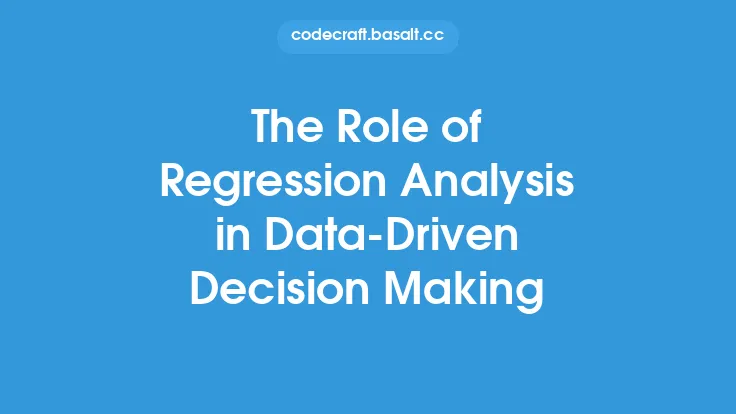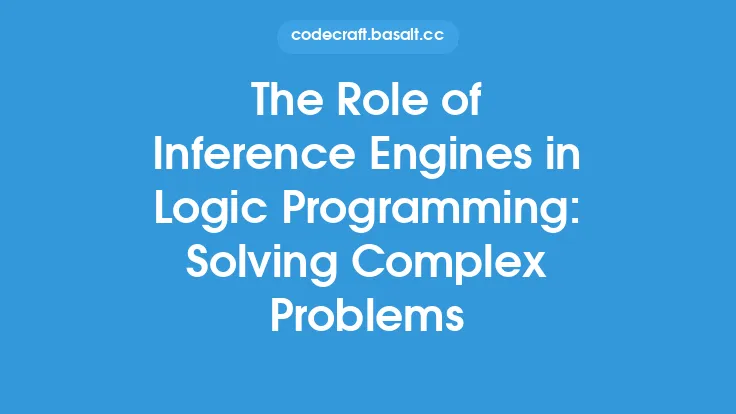When faced with complex decision-making problems, finding the optimal solution can be a daunting task. These problems often involve a multitude of variables, constraints, and objectives, making them challenging to solve using traditional methods. This is where constraint programming comes into play, offering a powerful paradigm for modeling and solving complex problems. By leveraging constraint programming, individuals and organizations can make more informed decisions, optimize resources, and improve overall efficiency.
What is Constraint Programming?
Constraint programming is a programming paradigm that focuses on finding solutions to problems by satisfying a set of constraints. It involves defining a model of the problem, which includes variables, domains, and constraints, and then using constraint satisfaction algorithms to find a solution that satisfies all the constraints. This approach is particularly useful for solving complex problems that involve multiple variables, constraints, and objectives.
Benefits of Constraint Programming
The benefits of using constraint programming for complex decision-making are numerous. One of the primary advantages is its ability to handle complex problems with multiple variables and constraints. By using constraint programming, individuals and organizations can model complex problems in a more intuitive and expressive way, making it easier to identify the optimal solution. Additionally, constraint programming can handle problems with multiple objectives, allowing for the optimization of multiple criteria simultaneously.
Another significant benefit of constraint programming is its ability to provide a high degree of flexibility and customizability. By defining a model of the problem, individuals and organizations can easily modify the constraints and variables to reflect changing circumstances or new information. This flexibility makes constraint programming an ideal approach for solving complex problems that require adaptability and responsiveness.
Technical Advantages
From a technical perspective, constraint programming offers several advantages over traditional programming paradigms. One of the primary technical advantages is its ability to leverage advanced constraint satisfaction algorithms, such as constraint propagation and search strategies. These algorithms can efficiently search the solution space, identifying the optimal solution in a fraction of the time required by traditional methods.
Another technical advantage of constraint programming is its ability to integrate with other programming paradigms and technologies. For example, constraint programming can be used in conjunction with machine learning and artificial intelligence to solve complex problems that involve uncertainty and ambiguity. Additionally, constraint programming can be used with databases and data analytics tools to solve complex data-driven problems.
Real-World Applications
Constraint programming has a wide range of real-world applications, from scheduling and resource allocation to supply chain management and financial planning. For example, airlines use constraint programming to optimize flight schedules and crew assignments, while manufacturers use it to optimize production planning and inventory management. Financial institutions use constraint programming to optimize investment portfolios and manage risk, while healthcare organizations use it to optimize patient scheduling and resource allocation.
Case Studies
Several case studies demonstrate the effectiveness of constraint programming in solving complex decision-making problems. For example, a leading airline used constraint programming to optimize its flight scheduling and crew assignment processes, resulting in a 10% reduction in costs and a 15% improvement in on-time performance. A major manufacturer used constraint programming to optimize its production planning and inventory management processes, resulting in a 20% reduction in inventory costs and a 25% improvement in production efficiency.
Best Practices
To get the most out of constraint programming, individuals and organizations should follow several best practices. First, they should carefully define the problem model, including the variables, domains, and constraints. This involves identifying the key variables and constraints that affect the problem, as well as the objectives and criteria that need to be optimized.
Second, they should select the most appropriate constraint satisfaction algorithm for the problem, taking into account the size and complexity of the problem, as well as the available computational resources. This may involve using a combination of constraint propagation and search strategies to efficiently search the solution space.
Finally, they should continuously monitor and evaluate the performance of the constraint programming model, making adjustments and refinements as needed to ensure that the optimal solution is achieved. This involves using data analytics and visualization tools to understand the behavior of the model and identify areas for improvement.
Future Directions
The future of constraint programming looks bright, with several emerging trends and technologies that are likely to shape the field in the coming years. One of the most significant trends is the increasing use of machine learning and artificial intelligence in constraint programming, which is enabling the solution of complex problems that involve uncertainty and ambiguity.
Another trend is the growing use of cloud computing and big data analytics in constraint programming, which is enabling the solution of large-scale problems that involve massive amounts of data. Additionally, the increasing use of mobile devices and the Internet of Things (IoT) is creating new opportunities for constraint programming, particularly in areas such as supply chain management and logistics.
Conclusion
In conclusion, constraint programming is a powerful paradigm for solving complex decision-making problems. Its ability to handle complex problems with multiple variables and constraints, its flexibility and customizability, and its technical advantages make it an ideal approach for a wide range of applications. By following best practices and staying up-to-date with the latest trends and technologies, individuals and organizations can leverage constraint programming to make more informed decisions, optimize resources, and improve overall efficiency. Whether you are a seasoned programmer or just starting out, constraint programming is definitely worth considering for your next project.





